The Great Barrier Reef, Australia. Clear blue water; sunshine above; sandy bottom below. Schools of fish down deep, meandering about patches of dark, amorphous stuff, seaweed perhaps, flowing with the current and swaying with rhythm of a slight swell.
Me...floating in 25ºC/ 75ºF water...decked out with 13mm of neoprene to stay toasty-warm, secured to a rope trailing from the back of our liveaboard vessel, along with nine other similarly tethered friends...all of us wriggling on the line like so much live bait.
We were fishing for dwarf minke whales (Balaenoptera acutorostrata).
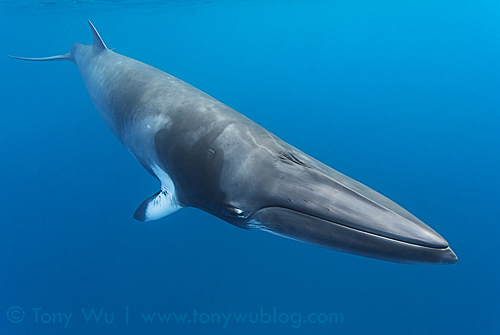
Dwarf minke whale (Balaenoptera acutorostrata) making a close pass,
close enough to fill the frame!
“What exactly is a dwarf minke whale?” you might be wondering. Well, that’s actually a really good question, because...surprise, surprise...we aren’t really sure.
Allow me to explain.
Until relatively recently, we (meaning collectively, as in “humanity”) recognised only a single species of minke whale. But...as is often the case, we were wrong.
Upon realising our mistake, we eventually agreed to certify two species of minkes: Balaenoptera acutorostrata, which are known only from the northern hemisphere; and Balaenoptera bonaerensis, which are the Antarctic minke whales found only in the southern hemisphere.
Morphological differences between the two types of minke whales (plus the fact that one species lives exclusively up north while the other resides Down Under) make it relatively easy to tell them apart.
So with this binary classification, minke science was once again settled...until the mid-1980s that is, when some intrepid researchers noticed that most minke whales visiting the northern Great Barrier Reef were about two metres give-or-take shorter than Antarctic minkes. And they look somewhat different to boot.
Hmmmm.
The story is, of course, much more involved than my over-simplified narrative here, but in short, there seems to be a third type of minke...now colloquially known as the dwarf minke whale.
To date, there has been no scientific name assigned to dwarf minkes, but studies of the genetics and outward appearance of these animals suggest that they are more closely related to the northern minkes than to the Antarctic variety, which is why the Linnaean name Balaenoptera acutorostrata is often used to refer to the dwarf minkes, even though they are distinct from northern-hemisphere minkes, and they live down south, not up north, where their binomial namesakes reside.
Clear?
Don’t worry if it’s not. There is still a lot we don’t know about these whales, so the situation is somewhat muddled.
But if you’d like to learn more about these animals, I suggest taking a look at the Minke Whale Project site, which is probably the best source of information available about dwarf minkes.
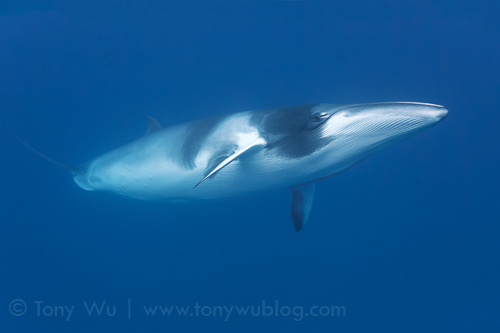
A friendly female dwarf minke whale (Balaenoptera acutorostrata)
Fishing for Minkes
I am accustomed to swimming, sometimes for quite a long time and distance, when I photograph cetaceans. Open ocean animals, after all, tend to move a lot.
It’s different with dwarf minke whales though. They come to you (under the right circumstances, of course).
Yup. That’s right. You hang onto a rope tied to the back of the boat, and the whales saunter over for a gander whenever the mood strikes them. It’s literally like fishing for minkes with human bait!
OK, I know. I was a total sceptic before this trip. Researchers, regulators and the marine tourism industry have cooperated to develop and implement a Code of Practice, which sets out the procedures, rules and standards of behaviour for permit holders to interact with the minkes and collect data for research. Most of the provisions are common sense, but the one that ran counter to my experience with other cetaceans is the “hang onto a rope and let the whales come to you” part.
I’ve known about this population of whales for many years, but I always figured that clinging to a rope and waiting for a random whale to pass by wasn’t really my thing.
I was wrong.
What I observed during my visit is that dwarf minkes can be really, really(!!!) inquisitive. They make frequent eye contact, and seem at times to “test” people on the line...almost to the point of being cheeky.
There was, for instance, one particular whale among a group of five that hung around our boat for hours. The whale in question often seemed to approach from a direction where no one was looking. It would “sneak up” from behind, then accelerate to zzzzzip past...precipitating a frantic (but inevitably fruitless) scramble among those of us on the line for a decent camera angle.
I could almost hear the cetacean snicker as it cruised into the blue, leaving a string of bobbing, bewildered bozos in its wake.
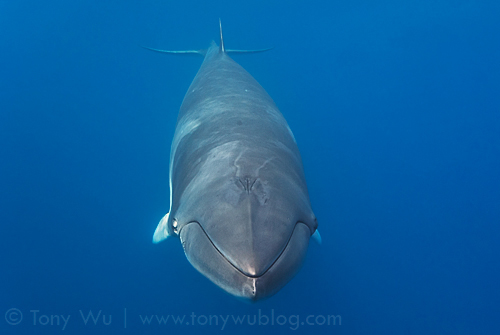
Head-on view of a dwarf minke whale (Balaenoptera acutorostrata)
visiting Lighthouse Bommie in the Great Barrier Reef
The first time, it seemed like a coincidence. The second as well. Then there was a third, a fourth...
Determined not to let a dwarf minke get the better of me, I prepped for counter-attack. (I know, this is not a normal thing to think/ write/ admit.)
Glancing out of the corner of my mask, I spied the sneaky cetacean lining up for another surprise appearance. Pretending not to notice, I waited, and waited, and waited...until it was just about in camera range. Then I turned to look straight at the oncoming whale.
Its reaction? A startled, almost befuddled look, accompanied by a rapid change of trajectory, fluke tucked between its legs (metaphorically, of course). Score one for H. sapiens!
We played our inter-species game for hours. Sometimes I won; most times though, the whale did.
Another experience worth mentioning...at one point, I heard several low rumbling sounds and felt the reverberation in my body. I thought the vibration might be from the boat, but when I felt it a second time, I looked down and saw a group of three whales materialise out of the blue.
In other words, I heard/ felt the minkes approaching before I saw them.
No one else seems to have noticed the low-pitched sounds, but that may just be due to the fact that I’m accustomed to listening for cetaceans when I’m in the water.
Later, on the boat, I learned that minke whales are known to produce a range of sounds, the most distinctive of which is a sound referred to as the “Star Wars sound”, for reasons that become obvious once you hear it. Listen to this recording (Source: Australian Government Department of the Environment and Water Resources) and you’ll understand:
[audio src="http://www.tonywublog.com/wp-content/uploads/2012/07/dwarf-minke-whale-sound.mp3"]
Pretty cool, eh?
Some Science
Among the requirements for engaging in encounters with dwarf minkes on the Great Barrier Reef is having researchers on board. We had two people with us: Matt and Susie Curnock, a young couple who both did their PhD work on minkes at James Cook University in Cairns.
First off, Matt and Susie are totally cool and fun. I can’t overstate the importance of this, as they were a perfect fit for my motley crew of fellow travellers (Matt, Susie: That’s actually a compliment).
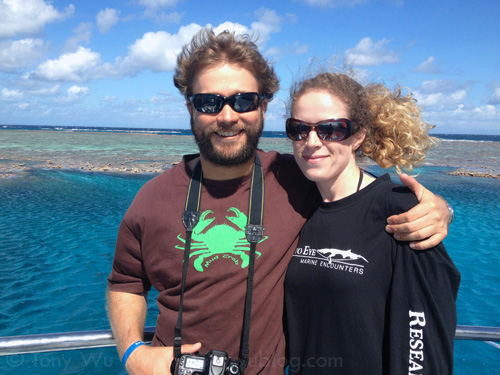
Matt and Susie...our friendly neighborhood minke whale experts
Second, they know a lot. And they were kind and patient enough to share their knowledge via talks in the evening and by answering the many questions we asked.
Perhaps the one thing that left the strongest impression on me is their effort to ID the minke whales that visit the northern Great Barrier Reef each season. They do this by taking photos and video, as well as by asking for photo/ video contributions from tourists.
Yes. Tourists.
Eager visitors come equipped with lots of cameras, money and enthusiasm, which can all be harnessed to help with data collection.
By tapping into these resources, instead of working at odds with the tourism industry (as is unfortunately often the case elsewhere), Susie, Matt and their colleagues have been able to identify hundreds of individual whales, as well as track their movements in a given year, and also across multiple seasons. Moreover, tourists have a chance to get up-to-date information directly from experts...a clear win-win situation if there ever was one.
The bulk of the existing ID and tracking analysis has been done for the 2006 to 2008 period, which is when Susie was working on her PhD, and when there was sufficient funding for the time and labour required to go through mountains of image and video data.
They are still collecting data, but unfortunately, there isn't enough funding right now to process the information in a systematic manner.
It was great to learn about their efforts, as the concept of using photographs to ID individual whales by body patterns strikes close to home, given my own efforts to count humpback whale mother/ calf pairs in Tonga.
At the end of our trip, many of us provided copies of our images to Susie, which led to two immediate IDs of whales they’ve encountered before. Hurray!
The first was Crescent, a female that was seen 4x in 2006, 3x in 2007, and 3x in 2008.
It’s possible she was also back during 2009-2011, but as I mentioned above, lack of funding has meant that much of the data collected during that period hasn’t been reviewed. The second whale (sex indeterminate) was previously seen in 2007, 2008 and 2009. Exciting stuff.
Here is a screenshot from Susie’s computer showing the markings on Crescent’s right pectoral fin:
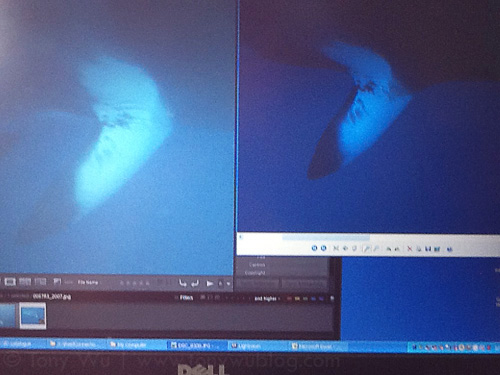
Resighting of a female dwarf minke whale named Crescent
The ID efforts and resulting population research related to the dwarf minke whales that visit the northern Great Barrier Reef are a terrific example of multiple parties from academia, government and the general public working together toward a constructive objective.
Some Science?
Now...just so you don't get the (mis)impression that I (or anyone else) took Matt seriously, here he is doing his Crocodile Dundee thing during our hike to Cook’s Lookout at the top of Lizard Island:
[video src="http://www.tonywublog.com/wp-content/uploads/2012/07/matt-curnock-lizard-island-turbo.mp4" width="500" height="282"]
For what it's worth, the ants really did taste like lemon, though it'd certainly take a lot of ant abdomens to make a decent meal.
There’s not much I can say about Matt’s acting talents(?), except perhaps to offer a pearl of wisdom that I got from Mr. Dundee Wannabe himself: “You can’t polish a turd, but you can coat it in glitter.”
Deep, Matt. Very deep.
Wrap-up and General Silliness
Heading out to sea always entails some risk of encountering bad weather. We were fortunate enough to have several days of beautiful conditions, with many hours of minke whale encounters each day. Strong winds hit during latter part of our trip though, which meant we had to take shelter.
We ended up at Lizard Island, where, among other activities, we ate a lot (in one case...10 large cannelloni rolls + associated helper food in a single sitting for me); hiked up to Cook’s Lookout (where Captain Cook is said to have climbed in order to scout for safe passage out of the inner waters of the Great Barrier Reef; snorkelled (actually, I stayed warm and dry while more foolish hearty souls got into the water); trekked to Blue Lagoon on the opposite side of the island (where we found a mysterious shrine constructed out of flotsam); and engaged in an anthropological study of Aussie culture (drank beer and watched the 2012 State of Origin rugby match at a bar).
In other words...we made the best of the circumstances and had loads of fun.
Key to the merriment were Captain Mark and his lovely partner Emily (MV Reef Connections). They took great care of us, (over)fed us, and made sure we had lots to do even when the weather wasn’t conducive to bobbing for Balaenoptera.
If you’re interested in learning more about dwarf minke whales, visit the Minke Whale Project site. If you have a group of friends and want to consider chartering a vessel, get in touch with John and Linda Rumney at Eye to Eye Marine Encounters. Or, if you’d rather join a pre-arranged commercial trip, Mike Ball runs regularly scheduled itineraries during the minke season.
[Correction (18 July): John and Linda Rumney organise scheduled itineraries as well as chartered trips.]
I may head back again in the future, so if you’re silly enough to contemplate spending time with me interested, email me to let me know.
Finally, to wrap up...following are some snapshots to give you an idea of what happens when a dozen+ idle minds converge. It's a good thing I was around to provide adult supervision.

Vania "working"
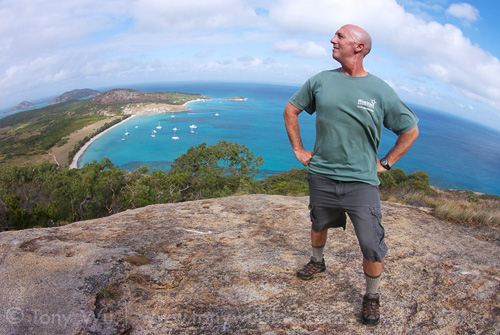
Phil giving Conquistadors a bad name

Julian conveying his affection for me
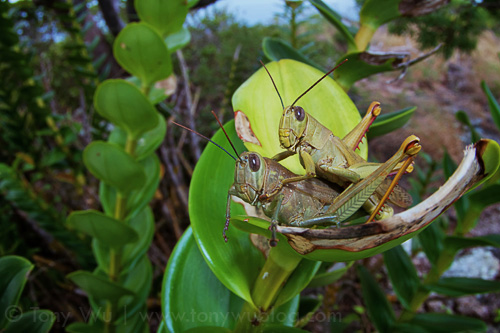
Mommy, what are the grasshoppers doing?
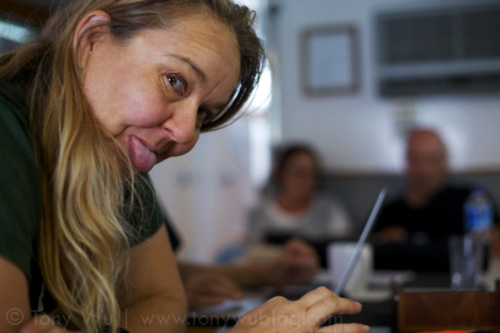
Julia sharing her thoughts
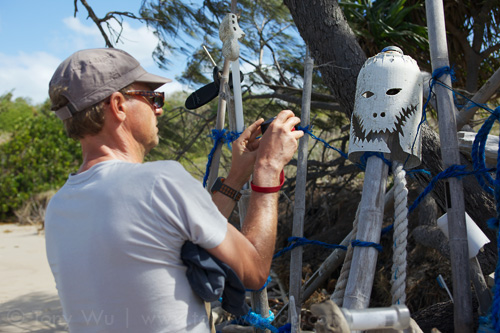
Patrik being a tourist, taking photos of the flotsam shrine we found
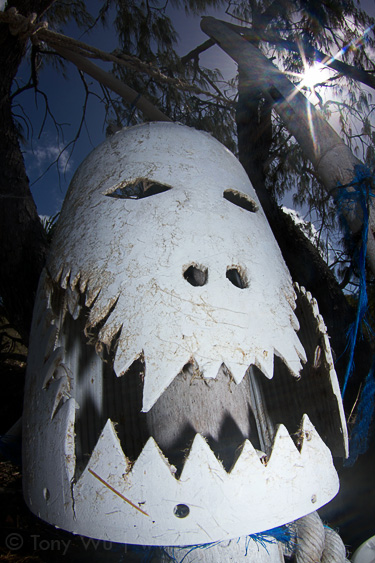
Flotsam totem pole at Lizard Island
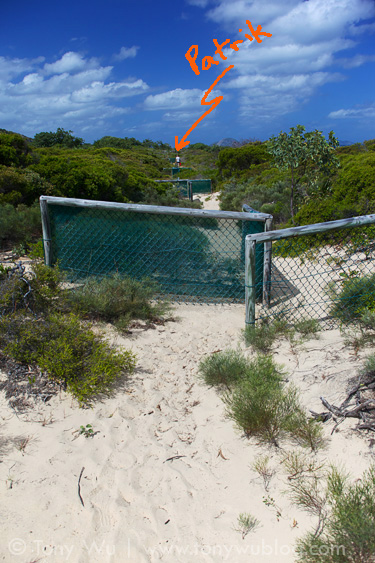
Patrik searching frantically for his shorts (don't ask)
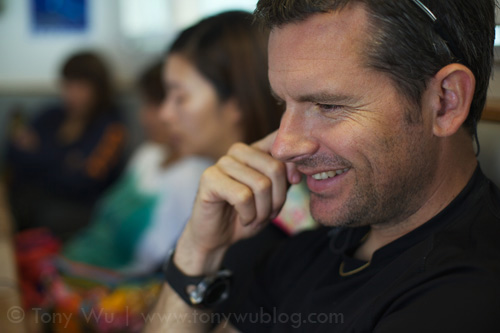
Stephane pretending not to notice the camera pointed at his face
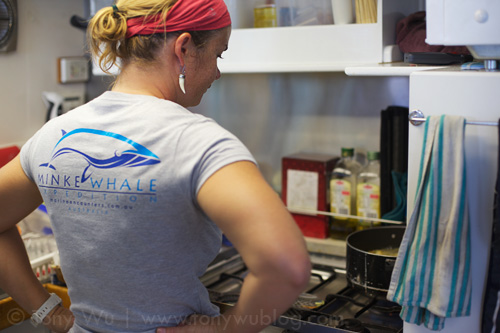
Emily whipping up more amazing food
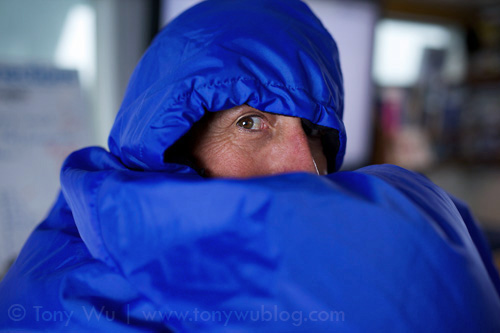
Phil...being Phil. Sigh.

Yvonne chowing down (See? I wasn't the only one!)
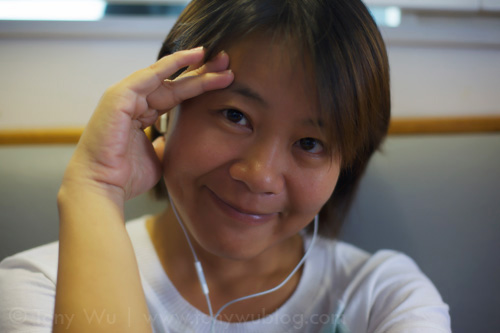
Jenny smiling because she enjoys my company so much
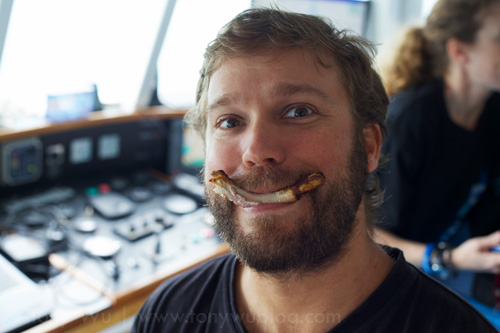
Matt demonstrating why Susie doesn't let him out much
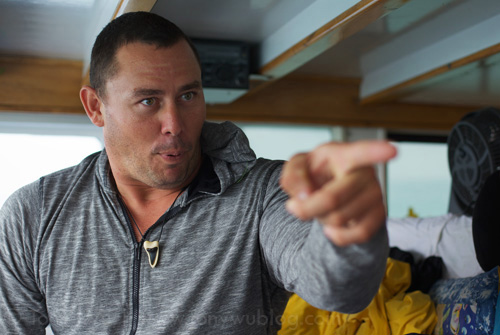
Mark giving Elmer Fudd a run for his money
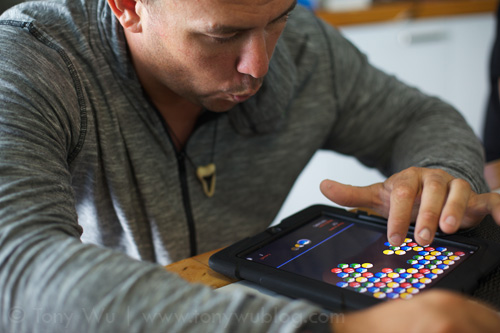
Mark demonstrating that it's true. Anyone can use an iPad.
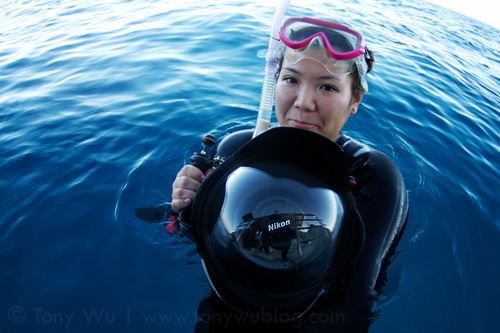
Vania demonstrating the time-proven "lens cap in dome" photographic technique
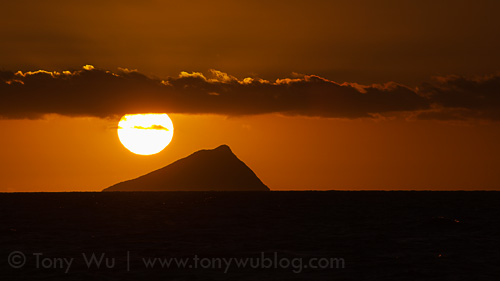
Beautiful sunset at Lizard Island
Oh yeah...almost forgot. Here's a video of the trip troublemakers putting their heads together to work on an important project just before we returned to Cairns:
[video src="http://www.tonywublog.com/wp-content/uploads/2012/07/jenny-vania-yvonne.mp4" width="500" height="282"]